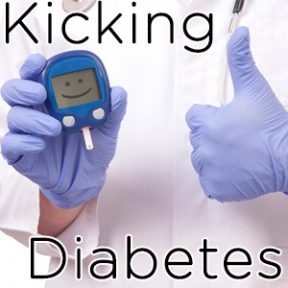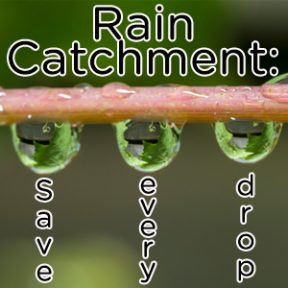 Didn’t the era of burning books end with McCarthyism? Just the concept of banning intellectual property for fear of exposing kids to concepts like homosexuality, sexual assault, violence, and drugs (things that affect almost all of us at some point in our lives) smells a bit like helicopter parenting! I was really shocked when I saw the list of the top 10 most banned books in America in 2014.
Didn’t the era of burning books end with McCarthyism? Just the concept of banning intellectual property for fear of exposing kids to concepts like homosexuality, sexual assault, violence, and drugs (things that affect almost all of us at some point in our lives) smells a bit like helicopter parenting! I was really shocked when I saw the list of the top 10 most banned books in America in 2014.
The American Library Association (ALA) reports that the most “challenged” books in 2014 include a children’s book about gay penguins (really?), and a memoir by a sexual assault survivor. People have even tried to ban award-winning Toni Morrison’s novel The Bluest Eye! In 1993, Morrison won the Nobel Prize in Literature, and in 1988, she won a Pulitzer Prize for Fiction (for Beloved). Who bans Toni Morrison’s books?
Check out the Los Angeles Times’ article “The most banned and challenged books of 2014” to see the complete list of books. This makes me worry that the fear of McCarthism that inspired Ray Bradbury to write Fahrenheit 451 might still be alive and well. I hope this article ratchets up interest in these books! As for me, I’m curious to see what kinds of books people have tried to ban, and I plan to check them out!
[Source]
 Didn’t the era of burning books end with McCarthyism? Just the concept of banning intellectual property for fear of exposing kids to concepts like homosexuality, sexual assault, violence, and drugs (things that affect almost all of us at some point in our lives) smells a bit like helicopter parenting! I was really shocked when I saw the list of the top 10 most banned books in America in 2014.
Didn’t the era of burning books end with McCarthyism? Just the concept of banning intellectual property for fear of exposing kids to concepts like homosexuality, sexual assault, violence, and drugs (things that affect almost all of us at some point in our lives) smells a bit like helicopter parenting! I was really shocked when I saw the list of the top 10 most banned books in America in 2014.
The American Library Association (ALA) reports that the most “challenged” books in 2014 include a children’s book about gay penguins (really?), and a memoir by a sexual assault survivor. People have even tried to ban award-winning Toni Morrison’s novel The Bluest Eye! In 1993, Morrison won the Nobel Prize in Literature, and in 1988, she won a Pulitzer Prize for Fiction (for Beloved). Who bans Toni Morrison’s books?
Check out the Los Angeles Times’ article “The most banned and challenged books of 2014” to see the complete list of books. This makes me worry that the fear of McCarthism that inspired Ray Bradbury to write Fahrenheit 451 might still be alive and well. I hope this article ratchets up interest in these books! As for me, I’m curious to see what kinds of books people have tried to ban, and I plan to check them out!
[Source]
 If you’ve ever been confused by an emoji, you’re not alone. I know I’ve raised my eyebrows a few times trying to figure out what the writer was trying to communicate. Some emojis are just plain confusing and according to Good Housekeeping, there are 16 emojis that everyone has been using wrong!
If you’ve ever been confused by an emoji, you’re not alone. I know I’ve raised my eyebrows a few times trying to figure out what the writer was trying to communicate. Some emojis are just plain confusing and according to Good Housekeeping, there are 16 emojis that everyone has been using wrong!
Talk about confusing! Apparently, there is an “official” Emoji Chart that lists and defines all of the emojis that the vast majority of us have been misusing.
For example, have you seen this emoji before?  I would think that it is a painful, forced smile, but according to the chart, it is supposed to be a super happy smiling emoji. See how confusing this can get? No wonder my friend didn’t respond after I used this!
I would think that it is a painful, forced smile, but according to the chart, it is supposed to be a super happy smiling emoji. See how confusing this can get? No wonder my friend didn’t respond after I used this!
What about this emoji?  I’ve used this one dozens of times to be playful and teasing. But, it means that you’re enjoying something you’re eating. Wow! I don’t stick my tongue out when I’m eating — and if I did, it certainly wouldn’t be to express how good something is… Yuck! But, I don’t know how an emoji can illustrate salivating or eating something delicious. Hmmm.
I’ve used this one dozens of times to be playful and teasing. But, it means that you’re enjoying something you’re eating. Wow! I don’t stick my tongue out when I’m eating — and if I did, it certainly wouldn’t be to express how good something is… Yuck! But, I don’t know how an emoji can illustrate salivating or eating something delicious. Hmmm.
While emojis are fun to use and can definitely add more meaning to truncated text messages, they can be misleading. If you missed my post about “The Lost Art of Communication“, check it out. I just wish we can all go back to using words to describe how we feel or what we want to get across. It’s really the only way to be sure that the recipient of your message, whether it’s a text message, letter, or demand, completely understands what you want.
So, rather than taking the time to search for the best emoji for your text message, find the best words to describe what you want to say. Not only will it help your communication (and relationships), it’ll improve your oral communication, too! 
[Source]
 I’ve always wondered why our education system (K-12) in the United States has been “dumbed down” and controlled by administrators who look out for the bottom line (profits) rather than student engagement and learning.
I’ve always wondered why our education system (K-12) in the United States has been “dumbed down” and controlled by administrators who look out for the bottom line (profits) rather than student engagement and learning.
Acceptance of corporate money is also giving corporations leverage with every level of the educational system, from kindergarten to college. This affects everything from the food kids eat to the content they’re taught.
What do you think about this?
[Source]
 Yesterday, I introduced an idea to build an intentional, sustainable community at the Santa Cruz Chamber of Commerce meeting and I received a great response! And some applause! The Santa Cruz Sentinel was there and mentioned my idea in their article about the meeting:
Yesterday, I introduced an idea to build an intentional, sustainable community at the Santa Cruz Chamber of Commerce meeting and I received a great response! And some applause! The Santa Cruz Sentinel was there and mentioned my idea in their article about the meeting:
“Longtime resident and visionary educator Susan D’Arcy wants to create a new kind of place to live. The founder of Merit Academy, she’s mapped out a plan for a sustainable community, a dozen traditional homes, seven tiny homes, a dormitory plus a dining area, theater, pool, basketball court and a garden. She envisions her grandchildren and their friends living there.”
The article is in today’s Santa Cruz Sentinel, and there’s even a video on their site. It’s exciting to finally start getting some traction on this!
[Source]
 Three months ago, my doctor told me that I officially passed over the “prediabetes” (impaired fasting blood glucose) level to Type 2 diabetes. Talk about a sobering moment! My blood glucose level (fasting) was 140 (over 125 is considered diabetic). My A1C (3-month average blood-sugar level) was 6.5 (over 6.5 is considered diabetic). I just tipped the scales to becoming a diabetic. SIGH.
Three months ago, my doctor told me that I officially passed over the “prediabetes” (impaired fasting blood glucose) level to Type 2 diabetes. Talk about a sobering moment! My blood glucose level (fasting) was 140 (over 125 is considered diabetic). My A1C (3-month average blood-sugar level) was 6.5 (over 6.5 is considered diabetic). I just tipped the scales to becoming a diabetic. SIGH.
Check out my blog about this and how eating a raw vegan diet for 4 weeks changed everything for me. In addition to eating a raw vegan diet for 4 weeks, I also lost 6 pounds and worked out for about 15 minutes a day. This brought my blood glucose level down to 55, which was actually a bit low.
For the next 2 months, I introduced meat and seafood but continued to not eat dairy, grains (rice, wheat, quinoa, corn), beans (soy products, legumes), and fruit (except berries). I started to weed my landscape and build steps down the hillside by myself to get more cardio exercises in each week.
Working out in the gym wasn’t cutting it because I kept thinking about other things that I should be doing and I’d cut the sessions shorter each day. But digging a dirt path with the goal to complete it before events that we planned to host was a real goal, and I enjoyed doing it.
I was really curious to see what my A1C level was but I wanted to continue this Paleo diet and exercise plan for 2 months so the A1C would really reflect all of the changes I made. So although I monitored my daily blood glucose levels and was super happy with the 80-105 levels (under 100 is normal; 101-125 is prediabetic), I didn’t get the full blood panel done until today. My A1C is now 5.8 — down from 6.5 just 3 months ago! That means that I am at the lowest “prediabetic” level now. I also lost another 5 pounds! I plan to reduce my fruit intake to get my A1C down to below 5.7 so I will be at the non-diabetic level.
I’m not sure what the exact formula is to drop my glucose levels and A1C, but some sort of combination of vegan and Paleo with no grains, dairy, processed foods, or sugary fruit seems to do the trick for me. I’ve been keeping a food diary so I can check trends and hope to determine exactly what triggers my glucose levels. I do hope that I can eat rice and popcorn someday. If you’ve been managing your diabetes, what has worked for you?
 When should you ask for Letters of Recommendation?
When should you ask for Letters of Recommendation?
Hint: Not the day before your college application is due! Obviously, that would be very rude and would probably land you a luke-warm recommendation at best.
Most teachers and counselors request that students give them a list of the colleges and deadlines that they’re applying to 4 weeks before the first application is due. Super organized teachers and counselors also give students and parents questionnaires to complete that will give them interesting information and sound bites that they can use in their letters.
Better yet, give your teachers an updated resume that will give them a well-rounded perspective on you so they can make your letter of recommendation stand out. THAT’S THE GOAL, RIGHT? They already know how you’re doing in their classes so you don’t need to remind them of your grades or special assignments.
Instead, focus on projects you’ve done outside of the classroom. If you’ve lead school groups or clubs, participated in varsity or club teams, played an instrument, volunteered in the community, or done anything extraordinary (PROJECTS!), this is the place to toot your horn! You can even add photos to give them a better understanding of your participation in the various programs.
Always include a formal cover letter. Anytime you ask for a favor of anyone, always do it in writing and include pertinent information (deadlines, list of colleges, URLs, etc.). By taking the time to write a cover letter, you demonstrate your appreciation of their precious time.
Remember, teachers don’t get paid to write these and English/history and math/science teachers typically write about 50-200 letters of recommendation every fall. This would be a good time to tell them how you have enjoyed memorable class lectures or marvel at their vast knowledge about a particular subject. Keep it real though; they’ll see right through brown-nosing.
So get started on your resume now — before school starts in the fall and you won’t have time to put together an effective resume. The ideal time to request letters of recommendation is during the first week of school to beat the onslaught of requests that they’ll get in October and November. Time to get cracking!
 If you read the article “What If Everything You Knew About Disciplining Kids Was Wrong?“, you’re probably trying to justify how you’re parenting your children, and worse — how your parents disciplined you.
If you read the article “What If Everything You Knew About Disciplining Kids Was Wrong?“, you’re probably trying to justify how you’re parenting your children, and worse — how your parents disciplined you.
In my case, I thought about how discipline was handled at Merit Academy back in the ’90s when class sizes were a maximum of 6 students (my girls attended then).
At first blush, even with 6 students per class, our teachers didn’t have the time needed to have deep conversations with students about why they said or did something inappropriate and how they might handle the situation differently in the future. Don’t get me wrong; it’s not that our teachers were cold hearted — they absolutely weren’t — they just had a lot to handle because they provided a comprehensive academic program – TEACHING was the primary objective, and having to stop the class every time something went awry to have individual discussions with students just wasn’t possible. Sure, with big problems, the teacher met with the student during recess or lunch, but that wasn’t common.
But after reading the entire article, I agree that placing young kids on time outs or suspending teens doesn’t give them the opportunity to learn how to control themselves in the future. It’s simply punishment for their behavior. It’s worth the investment in our youth to teach them how to handle disappointment and how to conduct themselves in appropriate manners even when they are stressed out.
Luckily, this isn’t a problem at Merit Academy because class size is now just one student with one teacher, and our teachers really do spend class time working with students to help them understand responsibility, consequences, and control. I really believe the students benefit from having this structure.
I just don’t know how we can expect classroom teachers who have to manage between 20-40 students per class, to implement time-consuming disciplinary action. I think the majority of this philosophy must be implemented by parents, family and friends at home.
What do you think?
[Source]
 Here in California (and many of the western states), water shortages and severe drought issues have become prominent in the news. Local municipalities now have strict water restrictions and neighbors are “drought shaming“, i.e. reporting others’ misuse of water (washing cars, sprinkling lawns). Consumers are even going after commercial growers who export crops like almonds to foreign countries or bottled water companies (like Nestle) for selling our precious water reserves for profits.
Here in California (and many of the western states), water shortages and severe drought issues have become prominent in the news. Local municipalities now have strict water restrictions and neighbors are “drought shaming“, i.e. reporting others’ misuse of water (washing cars, sprinkling lawns). Consumers are even going after commercial growers who export crops like almonds to foreign countries or bottled water companies (like Nestle) for selling our precious water reserves for profits.
That’s why I set up a water-catchment system on my property!
I didn’t realize I could capture almost 8,000 gallons of water from just one storm until we tested out our new rain catchment systems. Surprisingly, the entire tank filled up in just one night! Three years ago, we installed a 4,999 gallon tank (a 5,000 gallon tank requires a building permit!) to collect rain water from the road above our house.
It was simple to do! We laid gravel on a 10-foot by 10-foot pad and Scotts Valley Sprinkler and Pipe Supply delivered it exactly where we wanted it to be. We diverted the existing drainage pipes to pour into the top of our tank and hooked the tank up to our drip irrigation system for our fruit tree orchard.
Thrilled by our ability to capture so much water in just one night, we bought 10 IBC tanks that each hold 275 gallons of water. We lined all 10 IBC tanks up behind our house and connected them together with a 2″ PVC pipe. Then we diverted one of the rain gutters from our rooftop to pour directly into one of the IBC tanks. Again, with just one storm, all 10 IBC tanks filled in just one night! We have been watering our gardens with this system all summer.
We also bought a filter system that purifies the water of petroleum and other toxic chemicals for the big tank – we didn’t want those toxins to end up in the fruit we eat! We’re building a sand-filter system (not as comprehensive) for the IBC tanks to purify the water that runs off our roof; it doesn’t have the toxic waste that the roadway has.
I plan to add more water-catchment systems so we can capture enough water to irrigate all of our trees, gardens, and landscape. It’s also reassuring to know that if we were ever without water, we could always chlorinate these tanks and have drinking water. Good to know…
 Teens today face the same basic social drama that we dealt with when WE were young, but for them, every move is magnified by the internet. What was once a rumor that spread around LOCALLY as cliques gossiped in the quad during lunch for us, is now instantly spread to everyone AND their friends through group texts, Facebook posts, Snapchat, Instragram, etc.
Teens today face the same basic social drama that we dealt with when WE were young, but for them, every move is magnified by the internet. What was once a rumor that spread around LOCALLY as cliques gossiped in the quad during lunch for us, is now instantly spread to everyone AND their friends through group texts, Facebook posts, Snapchat, Instragram, etc.
To put it in relative terms (depending on their social network), teens are dealing with a quad the size of a small city, filled with everyone they know and everyone their FRIENDS know, and those spreading hate and rumors are standing on a stage with a microphone and a speaker system that would make Pink Floyd green with envy. Basically, hurtful and just plain mean comments are blasted online instantaneously, sending teens into despair as they retreat into depression and feelings of isolation.
I read about an interesting study by Robert Selman and Emily Weinstein (a professor at the Harvard Graduate School of Education and a doctoral student, respectively), that discusses how teens help each other deal with online stress and abuse. They review what peers recommend and they give tips on how parents can reach out to teens who are targeted by cyberbullying and online stressful situations.
The basic gist is that helping teens with these problems involves being empathic, bolstering their self-esteem, and perhaps most importantly, really trying to understand the increased scope of what kids have to deal with today. Having an understanding of the social landscape can help parents partner with their teens to get through the situation.
[Source]
 I think writing personal statements and essays is probably the most dreaded part of the college application process for high school seniors. Year after year, deciding what to write and how to write it stumps even top students. Speaking as a college advisor, here are 4 things you should AVOID doing:
I think writing personal statements and essays is probably the most dreaded part of the college application process for high school seniors. Year after year, deciding what to write and how to write it stumps even top students. Speaking as a college advisor, here are 4 things you should AVOID doing:
#1: Don’t let your parents write your essays for you! Sounds ridiculous doesn’t it? But every year, I read essays written from a 40-something-year-old perspective and remind students that college admissions officers can pick out essays written by parents in a New York minute. Remember, their view on life comes with years of experience — something you don’t have. So don’t let your parents write them!
#2: Telling your story even if it doesn’t quite answer the prompt! Remember that the admissions team reads hundreds or thousands of essays that do answer the prompt so if yours doesn’t, you’ll stand out — and not in a good way. They’re obviously hunting for something from you and you NEED TO DELIVER IT. Many applicants also try to reuse essays that really don’t address the prompt, and that again, is a RED FLAG!
#3: Bore the admissions officers with general information already included on the application form, clichés and tired statements, and essays that lack personal details! Back up your statements with detailed stories that colorfully illustrate your point of view. First write your story, then carefully edit using good grammar and writing mechanics (no contractions!). Make sure your opening sentence or paragraph grabs their attention with a unique hook. Ask your English teacher or someone with great writing skills to edit it.
#4: Glaze over why you’re applying to their college! They don’t want to hear that you’ve selected their college because it’s located in a particular city or that it has a great reputation. EVERYONE SAYS THAT! Do your research and tell them why their particular departments (majors) intrigue you and how it compares to other colleges that you are considering. Find interesting clubs or unique programs that this college offers. While this may seem like an easy essay to write, you’ll do more research to prepare for writing it than any other essay topic.
If you’ve done a project — something that you started and completed on your own — definitely write about it in your personal statement or essays. It gives you the opportunity to show the college admissions officers how you’ve turned your passion into a real product, service, or event. This will clearly make your application stand out among your competition. But remember while writing about it, avoid the 4 problem areas listed above!










